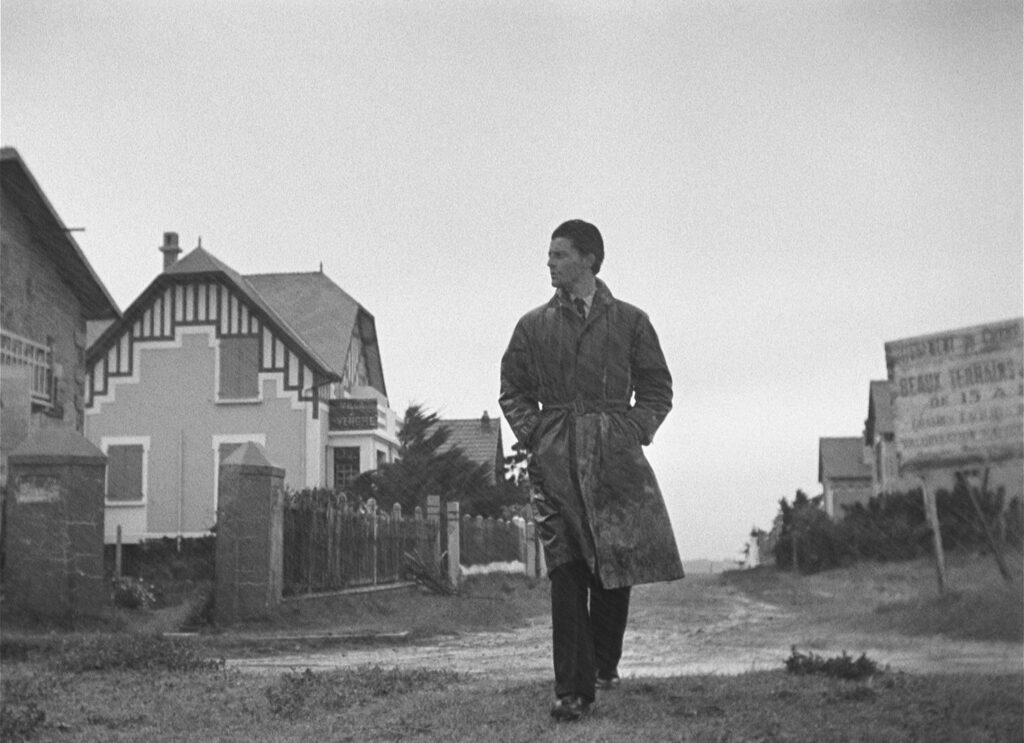
Such a Pretty Little Beach
1949, directed by Yves Allégret
A third of the way through Godard’s La chinoise, Jean-Pierre Léaud inverts the common view of early French cinema, that the Lumière brothers were realists whereas Méliès made fantasies. In fact, he points out, the Lumières, though they made documentaries, chose the same subjects as the Impressionist painters, like train stations or garden parties, while Méliès, though he staged everything, filmed current or projected events like political summits or space travel. Whether or not this twist is convincing, it rightly suggests that the division between realism and fantasy is not as simple as it looks.
On first impression, Such a Pretty Little Beach is a thoroughly realist movie. Its settings are decidedly ordinary, so timeworn that any glamor from the seaside location is washed away. Like so many of the Italian neorealist films made at the same time, its story is an unflinching look at the hardships of life. The incessant rain and prevailing darkness could easily be depressing, yet the movie has a surprisingly exhilarating flavor. It’s not hard, after all, to translate it into a kind of fantasy. The gloominess and bad weather can be romanticized as the proverbial “dark and stormy night”, the lonely inn with its broken staircase and cheap wallpaper is like a lighthouse on the desolate coast, and its two guests, Pierre (Gérard Philipe) and Fred (Jean Servais) both sustain an air of mystery until the last act, their backgrounds and motives full of secrets. There’s also something monstrous about the paralyzed old man who always glares at Pierre.
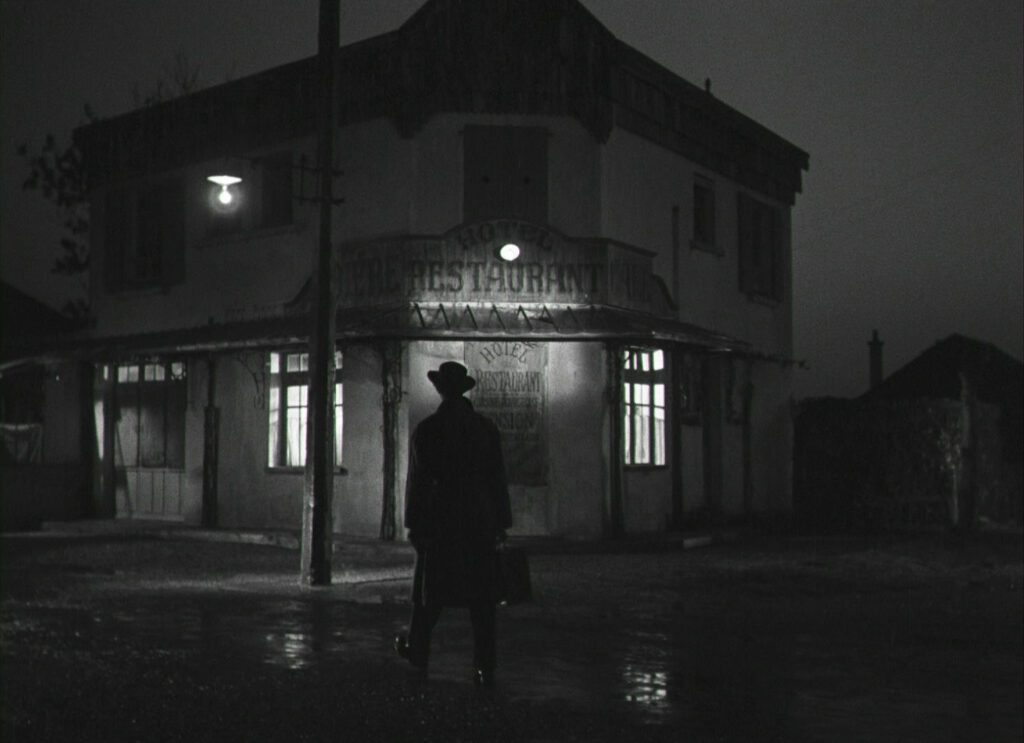
However there’s more at stake than how the movie feels. The opening scene, as Pierre rides a bus to the hotel where he spent his youth, drops two important clues. First the bus swerves to avoid an oncoming car with high beams on. This averted accident hints at the serious purpose to come. Two minutes and twenty seconds later, after passing the next town, the bus crosses, in slightly better light, the same embankment where it had averted the accident before. In a quiet way this odd repetition prefigures a layer of artifice under the realism. It’s hard to imagine any geography that would route such a bus, on such a coast, back across the same stretch after such an interval. Is it an error, or a signal that the movie will not be a literal facsimile of the real world? Let us test the latter hypothesis, seeing where a fanciful interpretation leads us.
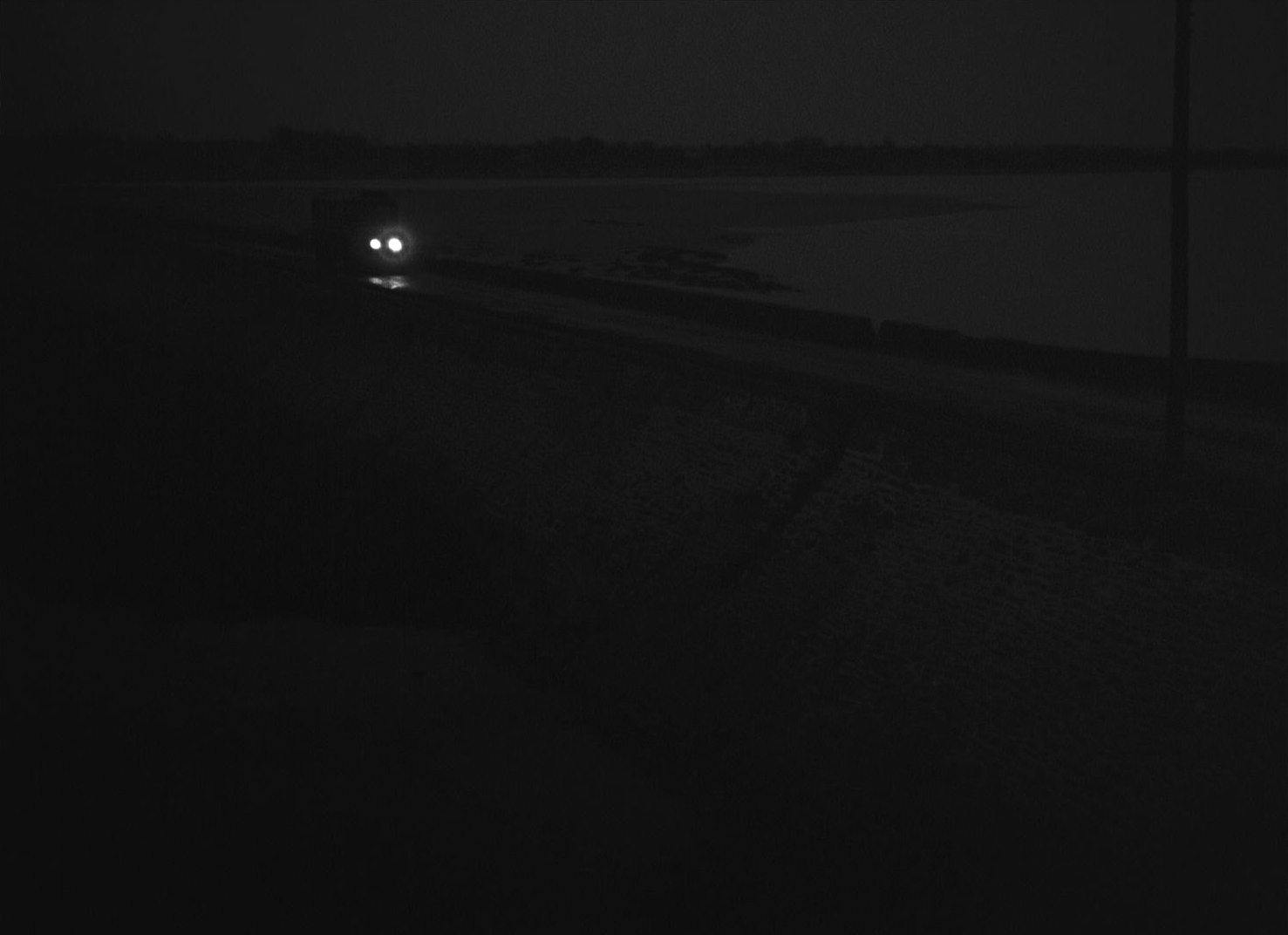
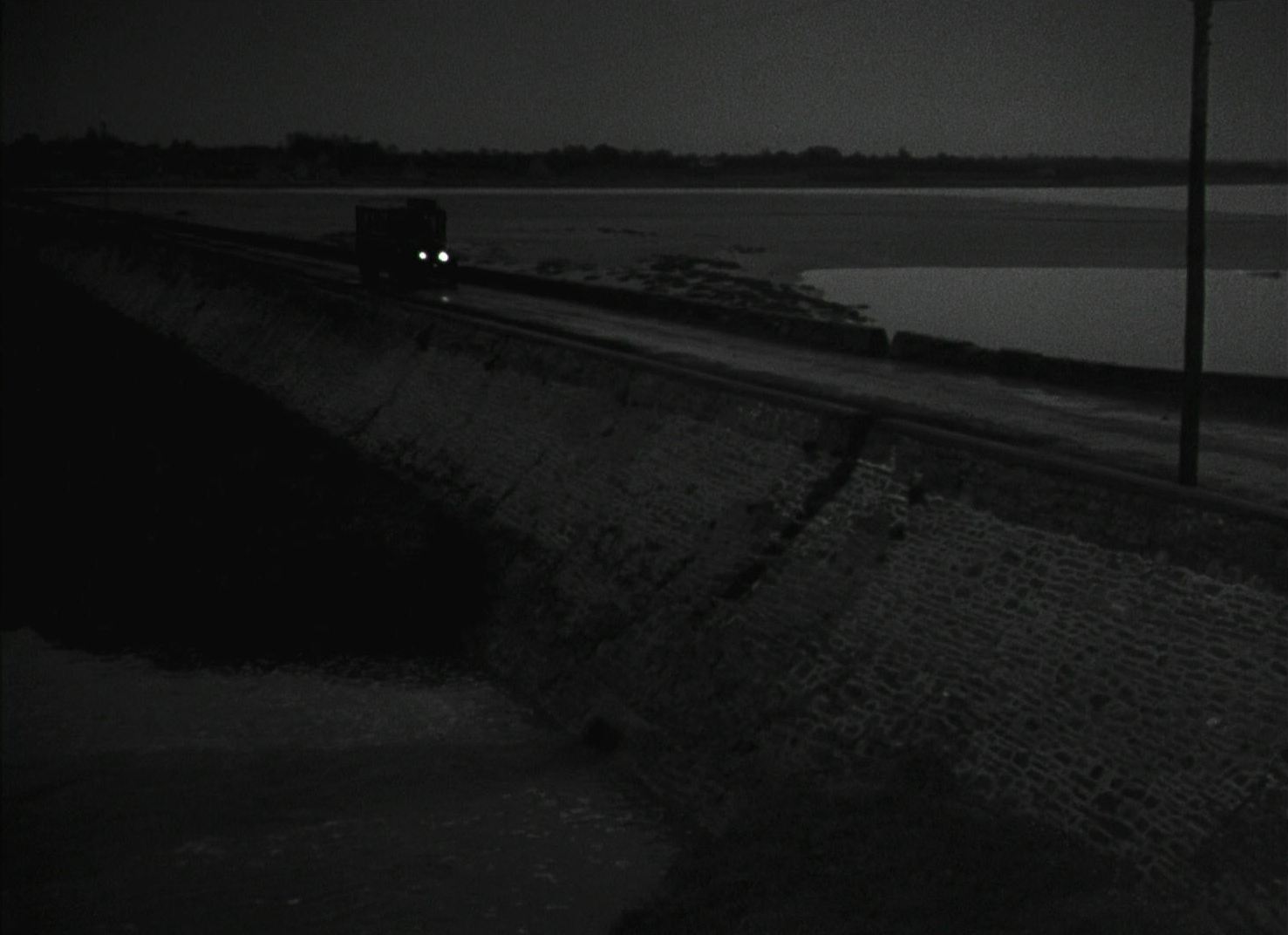
Such a Pretty Little Beach, let us say, is a story of time travel. Pierre, having been abused all his life as an orphan and lured to Paris by a wealthy old chanteuse, has killed the woman to escape his long bondage, and now he finds himself at a dead end, wanted by police and hounded by a mutual acquaintance who wants the woman’s jewels. Instead of running off to new horizons he steps back into his adolescence, returns to the hotel where he worked as a servant, meets his younger self, and attempts to prevent his own deadly error.
Although everything in the movie stands up to the more mundane reading – that the younger orphan is just another boy in a parallel situation – the commonalities between him and Pierre are enough to encourage our more fantastic hypothesis, that they’re actually the same person. In their mid-teens both Pierre and the young orphan do the same work, pumping water for guests and serving the old man; they both find refuge in a war bunker by the beach; they’re both beaten by the hotel manager and preyed on by wealthy older women; they’re both good looking but unsociable; and they both dig for cockles on the beach.
During his return visit Pierre makes two friends, the garage mechanic Georges and the waitress Marthe. After Fred alerts the police, Georges arranges to smuggle Pierre into Belgium, but when he doesn’t show up the next morning Marthe says that Pierre’s found “a different way out.” Georges answers, “Maybe it’s better.” We soon learn that this “way out” is suicide. Or is it? We never see the act nor the dead body – we only see the young orphan run into the bunker and come out, recoiling from something, dropping a small pistol before running away. If we suppose that Pierre has really traveled back in time, that he and the orphan are the same, then it’s logical to conclude that he has prevented his own crime and changed the course of his own life. The last time we see Pierre he finally gains the orphan’s trust and counsels him not to fall into the same trap. Pierre’s “different way out” is something far more fantastic and desirable than suicide – and furthermore we now know what averted disaster the opening scene had prophesied.
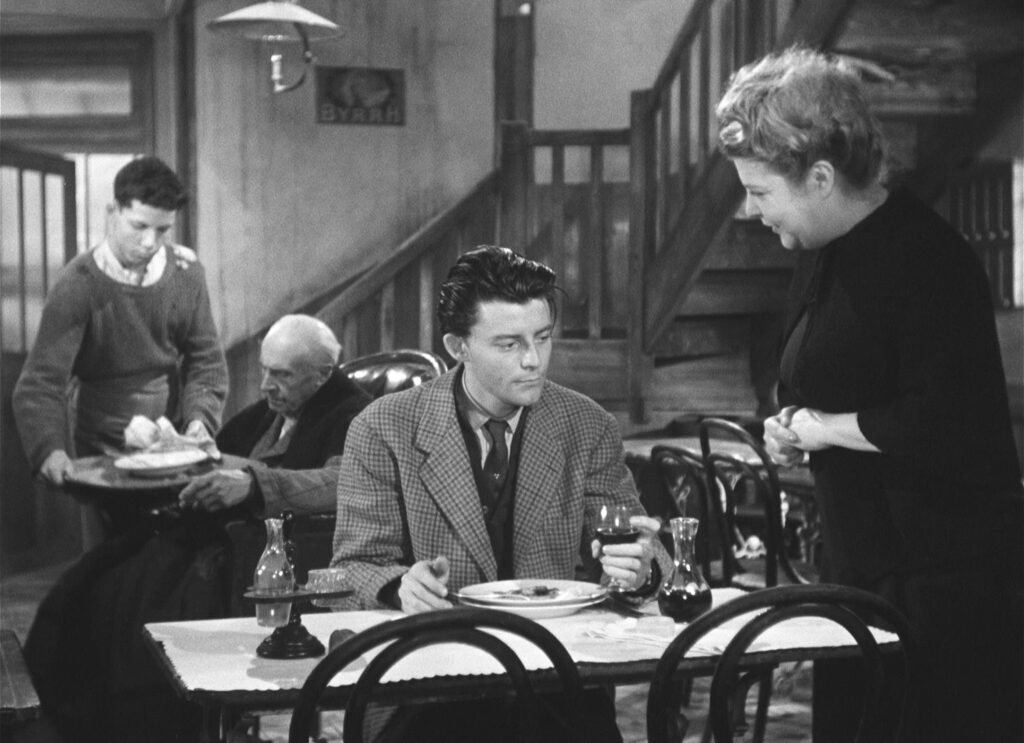
The two shots that bracket the opening – the bus driving along the same embankment twice – are more than just a cue for us to look behind the movie’s surface realism. They also encapsulate Pierre’s story from two points of view. For a criminal going back in time to alter his life, it’s a story of an averted accident; but for the youth whose harsh fate is averted by good advice, it’s an uneventful moment on his journey. He will never know what he’s avoided. His road looks clear.
It’s easy to miss much of the artifice in Such a Pretty Little Beach. Shortly after his arrival a nun passes Pierre on the street and slaps her pupil; the next scene echoes this as the hotel manager slaps the orphan hard across his face. Fred’s filthy car, the first thing we see of him, hints at the quality of his motives. In the café a clock’s pendulum swings ominously behind Pierre, as if ticking down the minutes in his doomed life. After he enters the bunker at the end, never to be seen again, the film cuts to a church with bells ringing, as if mourning his departure. When Pierre talks to the orphan for the last time, he gives the boy his watch. Like Shukichi’s gift to Noriko at the end of Tokyo Story, the gift has a symbolic importance: he’s giving the younger person the time he no longer has left, and with it the promise of a better life.
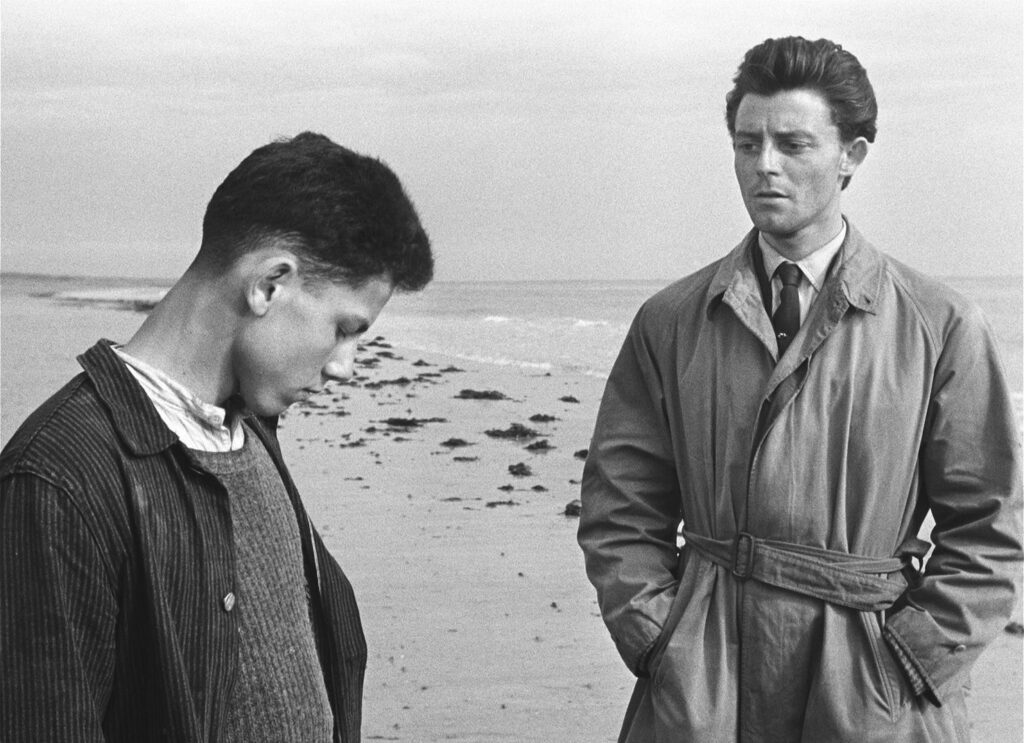
The film begins ordinarily enough with the forward motion of the bus along the road, and it ends with an extraordinary reverse motion, a rapid backward tracking shot along the beach. It’s normal, almost a rule, for movies to begin with horizontal movement or some similar expression of narrative or linear time. The backward motion fits, not only because Pierre has gone backward in time, but because it represents a broadening perspective. Pierre’s narrow focus on his own problems gives way to a preoccupation with saving the boy; the boy has gained some wisdom about life; and the audience can now see more in the story than its characters’ particular problems.
Now that we’ve seen the fantastic side of Such a Pretty Little Beach, we can step back and see the reality in it more clearly. The point of an interpretation, after all, is not to identify the correct storyline, but rather to see the guiding purpose that motivates the film. In the end it doesn’t matter whether Pierre has gone back in time literally or only psychologically. After viewing him and the young orphan as the same person at different stages of life, we can appreciate the equivalence Pierre senses between himself and the boy, which after all is the heart of the movie. Seeing a stranger as equivalent to oneself is the height of humanism. Because he dislikes Pierre so reflexively, the orphan is unsympathetic for most of the movie, but by continuing to treat him so charitably Pierre teaches us to fortify our own empathy. The movie would translate easily to our present age if we only substituted immigrants for orphans.
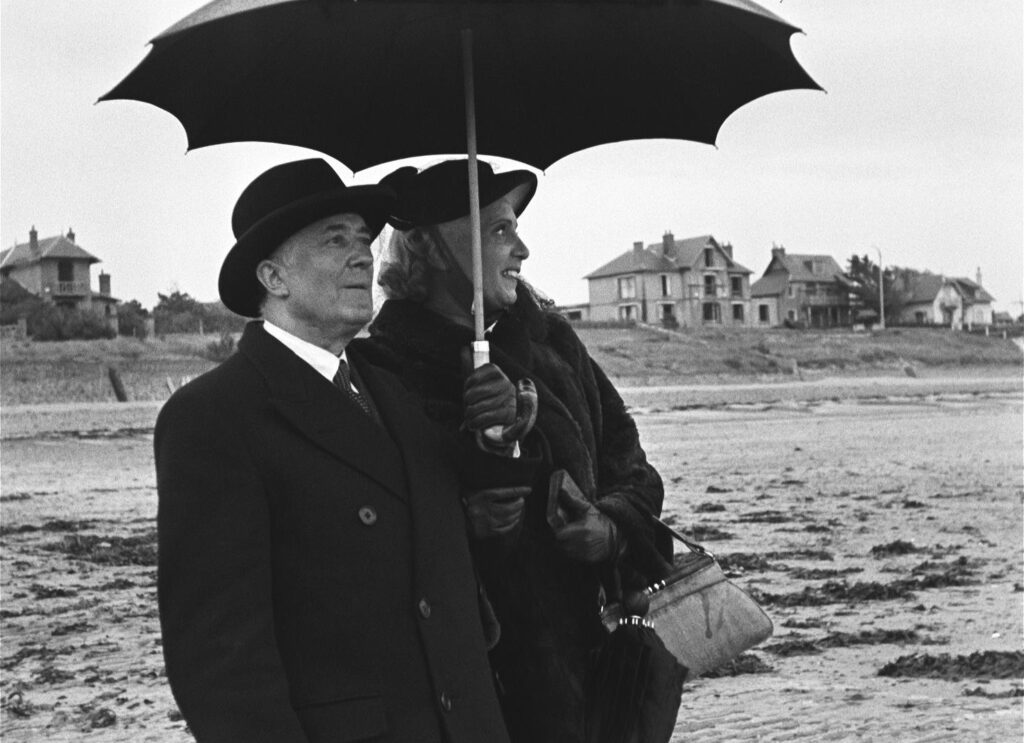
Such a Pretty Little Beach works because it blends realism and artifice, intertwined so tightly that it’s hard to imagine separating them. The movie is hardly unique in this; no film can escape artifice altogether, and it would be dishonest to pretend otherwise. Even if it were possible to film unvarnished reality, the actions of selecting and editing it would introduce artifice, placing a filter over that reality. Likewise, a film that escapes into fantasy and tries to avoid touching the real world would have no power to sharpen or intensify our view of life. Comparisons between the realism of the Lumières and the fantasy of Méliès can be instructive in introducing the terms, but as Godard points out, even at the outset of cinema these dual tendencies are inextricably mixed. It’s likely that the French, being especially aware of their debt to both of these founding traditions, are better than most at synthesizing them.
CONNECTIONS:
Phone Call from a Stranger – Telling repetition in the opening disguised as a simple continuity error
Tokyo Story – Gift of a watch at the end, symbolically giving time from a dying person to someone who needs a better life
Knife in the Water – Two characters representing the same person at different ages